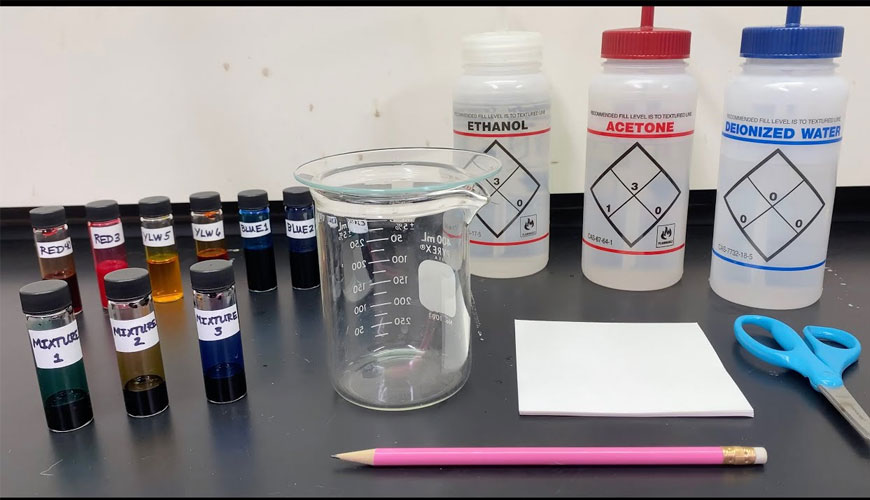

The ASTM D6886 test is for the determination of the weight percent of individual volatile organic compounds in waterborne air-dry coatings. This method can be used for the analysis of coatings containing silanes, siloxanes and silane-siloxane mixtures.

This method is not suitable for the analysis of chemical reaction-cured coatings (including two-component coatings and heat-curing coatings), because the dilution required here will inhibit the chemical reaction required for such coatings.
The precision statistics of this method were determined for water-based coatings where the volatile organic compound weight percent is less than 5 percent. The method has been used successfully with higher organic content water-based coatings and solvent-based coatings.
This method can also be used to measure the exempt volatile organic compound content (for example, acetone, methyl acetate, t-butyl acetate and p-chlorobenzotrifluoride) of water-based and solvent-based coatings. See local regulations for a list of exempt compounds. The methodology, as written, is nearly identical to that used in Test Method D6133, which is specific only for exempt volatile compounds.
Volatile compounds present at 0.005 percent by weight (50 ppm) or more can be determined. A procedure for doing this is given in Chapter 9. The volatile organic compound content of a coating can be calculated using data from Test Method D6886, but requires other data.
Data from this method will not always provide the volatile organic compound content of a paint film equivalent to EPA Method 24. Some compounds and some semi-volatile compounds can be considered volatile when the specified GC conditions are used, but do not completely volatilize during this time. One hour at 24°C conditions of EPA Method 110. Some or all of these materials remain in the paint film and are therefore not considered volatile organic compounds according to EPA Method 24. GC. Note, however, that EPA Method 24 has poor precision and accuracy at low levels of volatile organic compounds.
This method directly measures the volatile organic compound weight of air-drying coatings, unlike the other methods in Application D3960 that indirectly measure the volatile organic compound weight percent. Direct measurement of percent by weight often provides better accuracy, especially in water-based coatings with a low volatile organic compound content. California Polytechnic State University conducted an extensive study for the California Air Resources Board comparing the precision of the direct method with the indirect method. This study can be used to decide whether the current method or other methods in Application D3960.
Values stated in SI units should be accepted as standard. No other units of measurement are included in this standard.
This standard does not purport to address all, if any, safety concerns associated with its use. It is the responsibility of the user of this standard to establish appropriate safety, health and environmental practices and to determine the applicability of regulatory restrictions prior to use.
Our organization also provides testing services to enterprises within the framework of laboratory testing services, within the scope of ASTM D6886 Gas Chromatography and Standard Test Method for Determining the Weight Percentage of Individual Volatile Organic Compounds in Water Based Air-Dry Coatings.
To get an appointment, to get more detailed information or to request an evaluation, you can ask us to fill in our form and reach you.